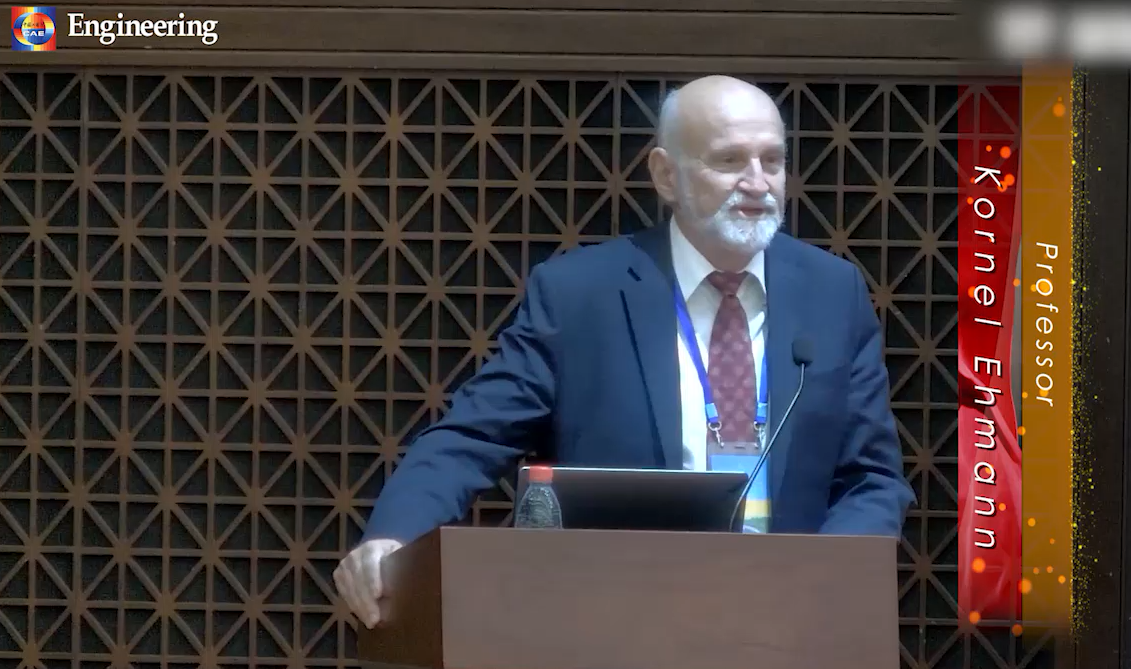Search scope:
排序: Display mode:
Leidenfrost drops on micro/nanostructured surfaces
Vishal TALARI, Prakhar BEHAR, Yi LU, Evan HARYADI, Dong LIU
Frontiers in Energy 2018, Volume 12, Issue 1, Pages 22-42 doi: 10.1007/s11708-018-0541-7
Keywords: Leidenfrost drop Leidenfrost temperature heat transfer enhancement micro/nanostructured surfaces

Wireless passive flexible accelerometer fabricated using micro-electro-mechanical system technology forbending structure surfaces Research Article
Chen LI, Mangu JIA, Yingping HONG, Yanan XUE, Jijun XIONG,lichen@nuc.edu.cn
Frontiers of Information Technology & Electronic Engineering 2022, Volume 23, Issue 5, Pages 801-809 doi: 10.1631/FITEE.2100236
Keywords: Bending structure surfaces Flexible accelerometer Micro-electro-mechanical system (MEMS) technology
Development of and Perspective on High-Performance Nanostructured Bainitic Bearing Steel Review
Fucheng Zhang, Zhinan Yang
Engineering 2019, Volume 5, Issue 2, Pages 319-328 doi: 10.1016/j.eng.2018.11.024
Keywords: Nanostructured bainitic bearing steel Bearing steel Nanostructured bainite Development
Thermal radiative properties of metamaterials and other nanostructured materials: A review
Ceji FU, Zhuomin M. ZHANG
Frontiers in Energy 2009, Volume 3, Issue 1, Pages 11-26 doi: 10.1007/s11708-009-0009-x
Keywords: metamaterial nanostructured material thermal radiative property radiative energy transfer
Frontiers of Chemical Science and Engineering 2023, Volume 17, Issue 11, Pages 1621-1622 doi: 10.1007/s11705-023-2365-1
New nanostructured sorbents for desulfurization of natural gas
Lifeng WANG, Ralph T. YANG
Frontiers of Chemical Science and Engineering 2014, Volume 8, Issue 1, Pages 8-19 doi: 10.1007/s11705-014-1411-4
Keywords: desulfurization natural gas desulfurization hydrogen sulfide sorbent amine-silica sorbent
Structural engineering of transition metal-based nanostructured electrocatalysts for efficient water
Yueqing Wang, Jintao Zhang
Frontiers of Chemical Science and Engineering 2018, Volume 12, Issue 4, Pages 838-854 doi: 10.1007/s11705-018-1746-3
Keywords: water splitting structure engineering metal organic framework ion exchange synergistic effect hybrid structure conductive supports
Modeling nanostructured catalyst layer in PEMFC and catalyst utilization
Jiejing ZHANG, Pengzhen CAO, Li XU, Yuxin WANG
Frontiers of Chemical Science and Engineering 2011, Volume 5, Issue 3, Pages 297-302 doi: 10.1007/s11705-011-1201-1
Keywords: catalyst layer PEM fuel cell lattice model Monte Carlo method catalyst utilization
Jie HAN,Jun GUO
Frontiers of Structural and Civil Engineering 2017, Volume 11, Issue 1, Pages 56-65 doi: 10.1007/s11709-016-0380-8
Keywords: erosion geosynthetic stabilization sustainability vegetation
Contact of surfaces and contact characteristics of offset surfaces
CAO Lixin, GONG Hu, LIU Jian
Frontiers of Mechanical Engineering 2008, Volume 3, Issue 3, Pages 318-324 doi: 10.1007/s11465-008-0067-5
Keywords: relative important geometrical relationship geometrical invariant calculation
Optimal localization of complex surfaces in CAD-based inspection
XU Jinting, LIU Weijun, SUN Yuwen
Frontiers of Mechanical Engineering 2008, Volume 3, Issue 4, Pages 426-433 doi: 10.1007/s11465-008-0068-4
Keywords: deviation comparison non-linear localization inspection
Strategies on designing multifunctional surfaces to prevent biofilm formation? ?
Yang Lu,Zhanguo Yue,Wei Wang,Zhiqiang Cao
Frontiers of Chemical Science and Engineering 2015, Volume 9, Issue 3, Pages 324-335 doi: 10.1007/s11705-015-1529-z
Keywords: antimicrobial surface multifunctional
Interpolation of a spline developable surface between a curve and two rulings
Alicia CANTÓN,Leonardo FERNÁNDEZ-JAMBRINA
Frontiers of Information Technology & Electronic Engineering 2015, Volume 16, Issue 3, Pages 173-190 doi: 10.1631/FITEE.14a0210
Keywords: Developable surfaces Spline surfaces Blossoms
Flexible micro flow sensor for micro aerial vehicles
Rong ZHU, Ruiyi QUE, Peng LIU
Frontiers of Mechanical Engineering 2017, Volume 12, Issue 4, Pages 539-545 doi: 10.1007/s11465-017-0427-0
This article summarizes our studies on micro flow sensors fabricated on a flexible polyimide circuitThe micro flow sensor has merits of flexibility, structural simplicity, easy integrability with circuitsIn our study, we install the fabricated micro flow sensors on micro aerial vehicles (MAVs) to detect
Keywords: micro flow sensor flexible sensor surface flow sensing aerodynamic parameter micro aerial vehicle (MAV
Title Author Date Type Operation
Leidenfrost drops on micro/nanostructured surfaces
Vishal TALARI, Prakhar BEHAR, Yi LU, Evan HARYADI, Dong LIU
Journal Article
Kornel Ehmann: Micro-textured Engineered Surfaces(2019.10.10)
23 Apr 2021
Conference Videos
Wireless passive flexible accelerometer fabricated using micro-electro-mechanical system technology forbending structure surfaces
Chen LI, Mangu JIA, Yingping HONG, Yanan XUE, Jijun XIONG,lichen@nuc.edu.cn
Journal Article
Development of and Perspective on High-Performance Nanostructured Bainitic Bearing Steel
Fucheng Zhang, Zhinan Yang
Journal Article
Thermal radiative properties of metamaterials and other nanostructured materials: A review
Ceji FU, Zhuomin M. ZHANG
Journal Article
Preface to special issue on “Engineering Nanostructured Materials for Advanced Energy and Environmental
Journal Article
New nanostructured sorbents for desulfurization of natural gas
Lifeng WANG, Ralph T. YANG
Journal Article
Structural engineering of transition metal-based nanostructured electrocatalysts for efficient water
Yueqing Wang, Jintao Zhang
Journal Article
Modeling nanostructured catalyst layer in PEMFC and catalyst utilization
Jiejing ZHANG, Pengzhen CAO, Li XU, Yuxin WANG
Journal Article
Geosynthetics used to stabilize vegetated surfaces for environmental sustainability in civil engineering
Jie HAN,Jun GUO
Journal Article
Contact of surfaces and contact characteristics of offset surfaces
CAO Lixin, GONG Hu, LIU Jian
Journal Article
Optimal localization of complex surfaces in CAD-based inspection
XU Jinting, LIU Weijun, SUN Yuwen
Journal Article
Strategies on designing multifunctional surfaces to prevent biofilm formation? ?
Yang Lu,Zhanguo Yue,Wei Wang,Zhiqiang Cao
Journal Article
Interpolation of a spline developable surface between a curve and two rulings
Alicia CANTÓN,Leonardo FERNÁNDEZ-JAMBRINA
Journal Article








